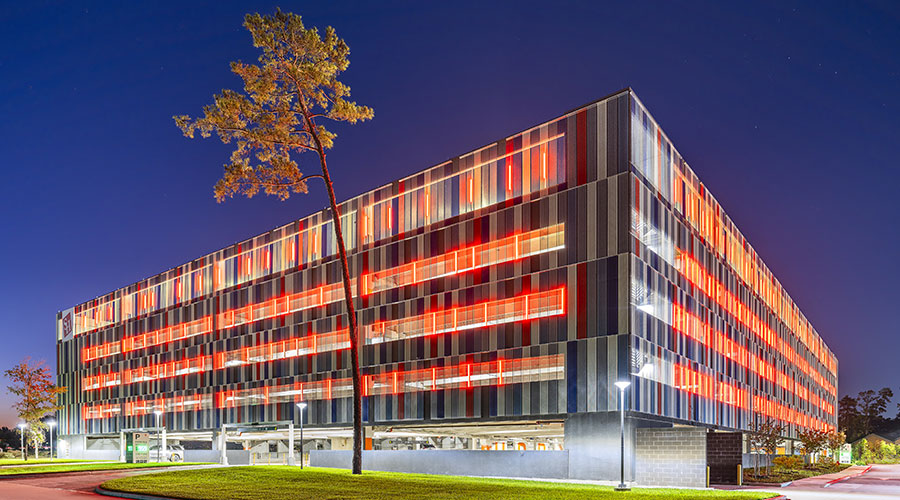Good Lighting Design Needs Layers, Glare Control
Another common commercial-lighting strategy that is poor from a design perspective is putting everything in the ceiling.
“People use downlighting way too much,” says Nancy Clanton, president, Clanton & Associates. “They’ll put up cans or really bright recessed lights inappropriately. When you have a downlight, you’re lighting the floor and that’s the least important area to light.”
Instead of blasting a ton of light from the ceiling down to the work surface, the experts advise breaking the lighting system out into several layers. An important layer is task lighting, what Clanton refers to as personalized lighting. Another layer is ambient lighting, which is lighting the architecture. If the walls and ceilings do not receive a soft wash of light, the result is a “cave effect.” And then decorative and accent lighting comes into play to add a bit of sparkle to the space, says Loeffler.
The layer to start with is the task, not the ambient, says Loeffler. “Design to define the space and deal with the visual tasks that are going to be performed in that space,” he says. “After that, if you have to fill in with some ambient lighting to meet code or just to brighten the space up, fine.”
By breaking the lighting into layers, facility managers are afforded flexibility when restacking, since the success of the lighting on the task isn’t dependent on a nearby overhead fixture. If putting all the lighting system in the ceiling is a must, Clanton says she would at least put in adjustable lights so they can be aimed to the wall.
One trick with task lighting, which is so important for energy savings and occupant satisfaction, is getting end users to understand and support that strategy. Often, the task lighting layer is left up to end users, and they may not be aware there is a strategy in place to lower ambient lighting levels and depend more heavily on the individual light at the task. Clanton’s firm was the lighting designer for the recent energy retrofit at the Empire State building, and in that situation she says the owner decided to provide task lighting to the tenants in the pre-builts to assure that all the elements of the energy-reduction strategy were in place.
Glare, Again
Another common misstep in terms of quality is trying to get too much light out of one fixture, says Barber. Without layers of light, the overhead light has to do all the work. “They try to get so much light out of a single fixture to where it becomes a source of glare, a source of discomfort,” he says.
Advanced technology such as solid-state lighting needs to be particularly well-designed to control issues with glare. “An individual LED is one-sixth the brightness of the sun,” says Benya. “Because they’re so small, we say they don’t really matter. LEDs are small but they’re not that small.” A high-bay LED application that might be producing upwards of 20,000 lumens can pose substantial glare issues. He is quick to point out that LEDs are not the issue, per se. “Done well, LEDs are vastly superior to just about any other light source we’ve ever had,” Benya says. “How you get them done right is the real challenge.”
Part of the challenge, he says, is that while facility managers have useful practical knowledge of lighting systems, it is with legacy sources such as fluorescents. This makes it difficult to wade through all the considerations required with new technologies like LEDs. “I would not suggest buying LEDs carelessly anymore than I would suggest asking your neighbor to perform brain surgery,” says Benya.
Related Topics:














